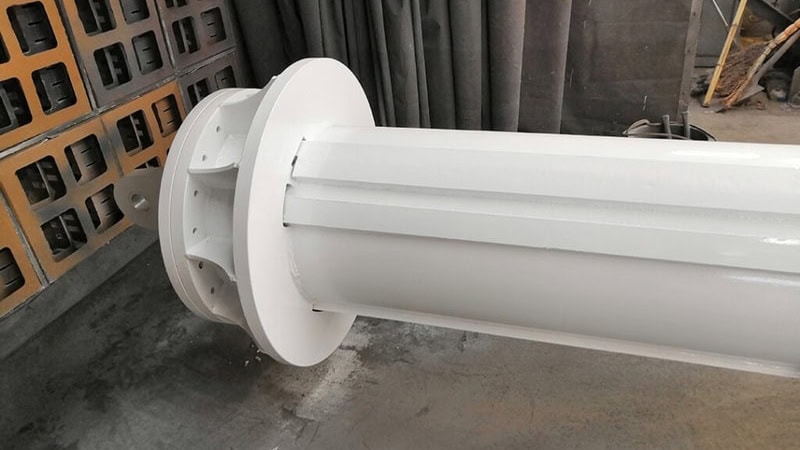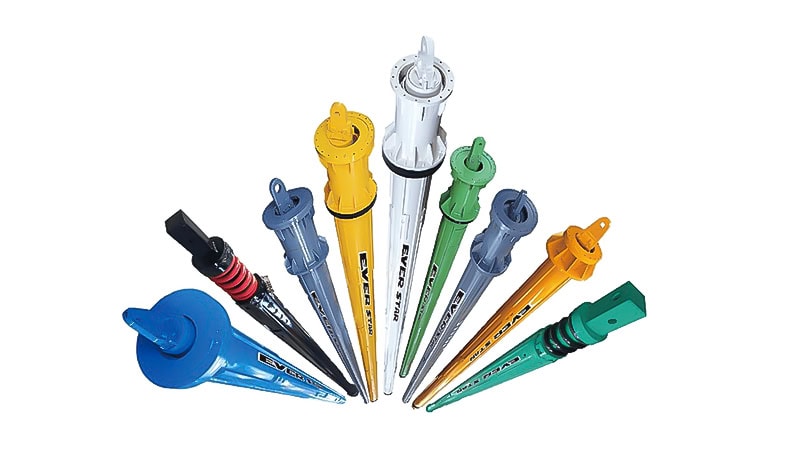
Key Takeaways:
- The Kelly bar rotary drilling machine ensures efficient and precise deep foundation drilling.
- Interlocking bars provide strong torque and durability for tough drilling projects.
- Proper connection to the rotary drive optimizes power transfer in the drilling process.
- Knowing soil conditions helps choose the right Kelly bar for better drilling results.
Kelly bars are essential components of hydraulic rotary drilling rigs, designed to deliver efficient and precise performance in deep foundation work. They are widely used in projects requiring strong load capacity and adaptability to diverse ground conditions.
Their telescopic Kelly Bars structure allows smooth extension and retraction, adjusting seamlessly to different drilling depths and varying soil types. At Everstar Machinery, this versatility ensures optimal performance in both standard and challenging environments.
This guide covers the Kelly bar’s design, main parts, types, maintenance, and applications, along with their operational role. It provides construction professionals and equipment operators with practical insights to choose the right tool and drilling method for each project.
Significance and Performance Advantages of Kelly Bars in Rotary Drilling

Kelly bars deliver crucial benefits that enhance drilling accuracy and speed, helping projects stay on schedule. Their ability to adjust to varying soil types makes them a reliable choice for deep foundation projects demanding both strength and precision.
Key Performance Benefits for Deep Foundation Projects
Torque and vertical force are efficiently transferred from the rig to the drill bit through Kelly Bars. This enables deeper, straighter, and faster drilling boreholes, even in tough soil or rocky conditions. Their sturdy design helps minimize downtime from equipment failures and allows drilling rigs to operate at maximum torque.
Why Kelly Bars Are Indispensable for Today’s Construction Sites
Supporting heavy-duty tasks, Kelly Bars also reduce wear on equipment components. This helps lower maintenance frequency and control overall project costs. Moreover, their use promotes safer operations by maintaining steady drilling performance in tough conditions, including at great depths.
Key Components of a Kelly Bar and Their Functions

A Kelly bar is built from precisely engineered parts working together to handle tough drilling conditions. Each element supports strength, efficiency, and adaptability, ensuring consistent performance across varying foundation depths and ground types.
Telescopic Sections and Construction Materials
Typically, telescopic Kelly bars consist of 2 to 6 segments made from steel alloys like 35CrMo or Q550. The inner and outer sections work together to provide toughness and flexibility, enabling smooth extension and retraction while maintaining structural strength during deep drilling.
Kelly Bar Parts: Rails, Keys, and Drive Mechanisms
Major components include rails or ribs that ensure effective torque transfer according to the drilling method, key plates that act as critical wear surfaces protecting the bar, top flanges securely connecting to the rotary drive, and shock absorbers that minimize vibration, enhancing drilling precision and equipment longevity.
Types of Kelly Bars and Their Applications

Various Kelly bar designs are available to suit specific drilling applications. Understanding these differences helps you select the right type, ensuring efficiency, durability, and safety across a range of foundation and construction projects.
Friction vs. Interlocking Kelly Bars
Friction Kelly bars transfer force through frictional contact between telescopic sections, providing smooth operation for moderate depths. Interlocking Kelly bars use mechanical locks or drive ribs to deliver higher torque capacity and strength, making them ideal for deep or heavy-duty drilling tasks.
Choosing Kelly Bar Types Based on Drilling Conditions
In construction, friction bars work best in soft or medium soils such as sandy or clay-rich foundations. Meanwhile, interlocking bars excel in rock drilling, bridge foundations, and other high-torque projects where stability, precision, and deeper penetration are essential.
Integration of Kelly Bars with Rotary Drilling Machines

When working on-site, a Kelly bar connects directly to the drilling rig, creating a smooth and powerful drilling system. This setup ensures steady torque transfer and consistent downward force, making deep foundation work faster, safer, and more reliable.
Connection to Rotary Drive and Drill String
The Kelly bar’s top securely attaches to the rig’s rotary table or drive, ensuring precise transmission of rotational power. At its base, it connects to various drilling tools such as augers or buckets, creating an integrated system that works smoothly under pressure.
Transmission of Torque and Vertical Force
Rotational torque and downward crowd force are transmitted directly to the drill bit via the Kelly Bar. This combined power enables the bit to cut through hard soil or rock and reach the required drilling depth for stable, long-lasting foundations.
Maintenance and Longevity of Kelly Bars in Drilling Operations

Regular maintenance plays a crucial role in keeping Kelly bars performing at their best during demanding drilling projects. Thorough inspection, cleaning, and lubrication extend service life and contribute to safer, more reliable operations on-site.
Regular Inspection of Wear and Structural Integrity
Routine checks should include inspecting for cracks, deformation, and excessive wear on keys or rails. Identifying these issues early prevents costly failures, supports consistent drilling performance, and reduces safety risks for both operators and equipment.
Protective Coatings, Cleaning, and Lubrication
Everstar recommends inspecting protective coatings to guard against corrosion, removing abrasive buildup that can damage moving parts, and applying lubrication to sliding sections. These measures maintain operational efficiency and reduce the need for frequent repairs or part replacements, as recommended by OSHA.
FAQs
What is the primary function of a Kelly bar in rotary drilling?
The Kelly bar transfers torque and vertical force from the drilling rig to the drill bit. It enables deeper, straighter drilling boreholes by adapting to various soil types and ensuring efficient, precise performance during deep foundation projects.
What are the different types of Kelly bars?
There are mainly two types: friction and interlocking Kelly bars. Each design suits specific drilling needs. Friction bars for softer soils and moderate depths, while interlocking bars provide higher torque capacity for heavy-duty, rock, or deep drilling tasks.
How do friction and interlocking Kelly bars differ?
Friction Kelly bars transfer torque through contact between telescopic sections, ideal for smoother operation at moderate depths. Interlocking use of mechanical locks or drive ribs, offering stronger torque transmission and durability for challenging, deep, or rock drilling projects.
How does a Kelly bar connect to a rotary drilling machine?
The Kelly bar’s top attaches securely to the rig’s rotary drive, transferring rotational power. Its bottom connects to drilling tools such as augers or buckets, forming an integrated system that ensures smooth and efficient drilling operations on-site.
What maintenance practices extend the life of Kelly bars?
Regular inspection for wear, cracks, and deformation is crucial. Cleaning abrasive buildup, checking protective coatings, and lubricating sliding parts help prevent premature wear, ensuring smooth operation and longer service life for Kelly bars during demanding drilling applications.
Conclusion – Maximizing Kelly Bar Performance in Drilling Rigs
Comprehending Kelly bars, their design, key parts, types, and proper maintenance is vital. These telescopic components enable rotary drilling machines to deliver deep and efficient foundation drilling. With the right knowledge, you can optimize your drilling operations and maximize equipment longevity for every project.
Enhance Kelly Bar Efficiency
Contact Everstar Machinery’s experts to find durable, high-quality Kelly bars designed for rotary drilling machines. Explore Everstar’s product catalog for advanced solutions that boost drilling efficiency and reliability.